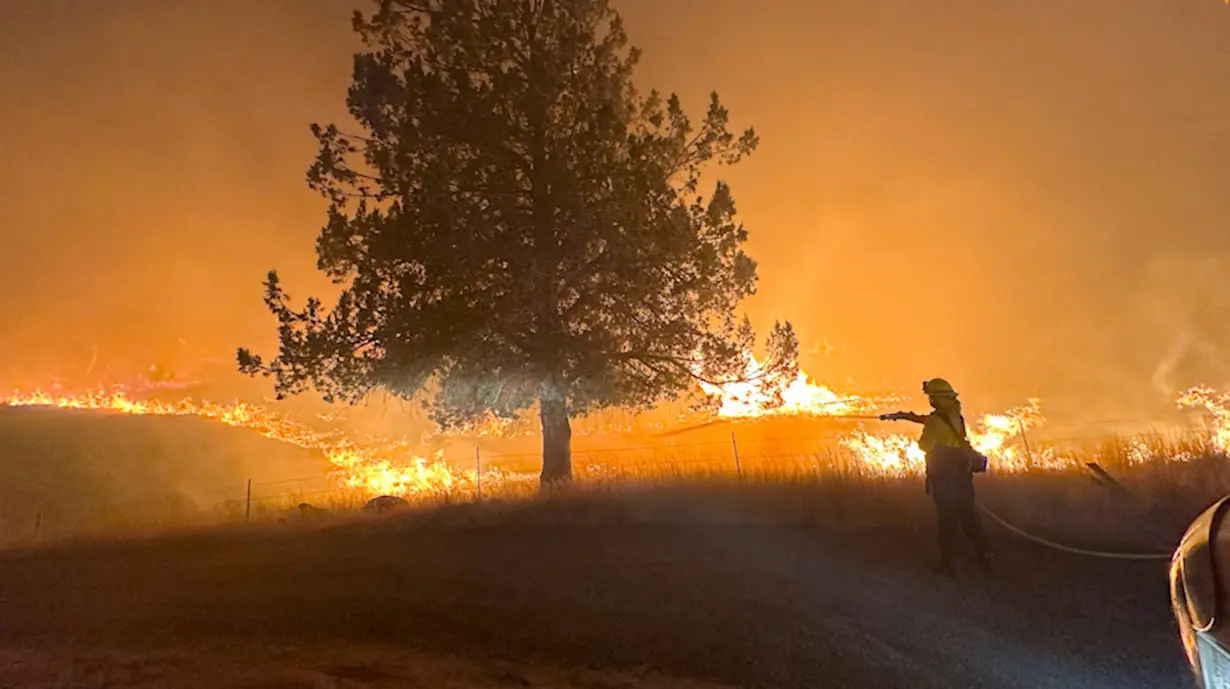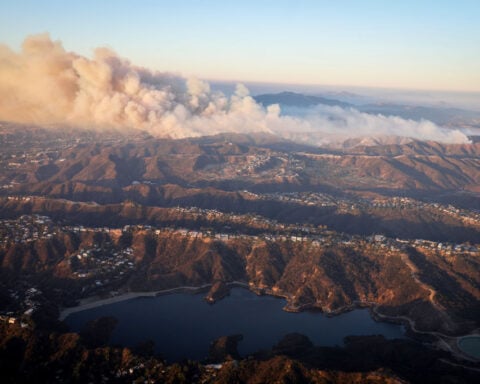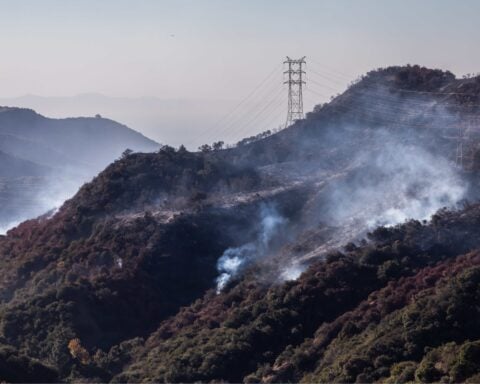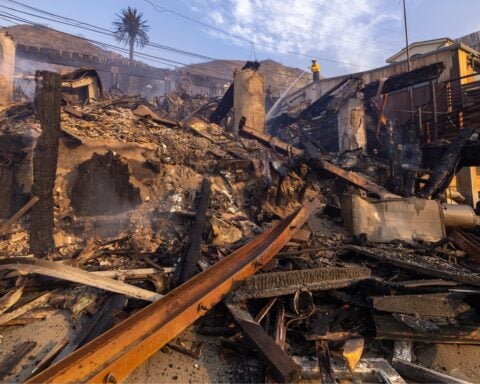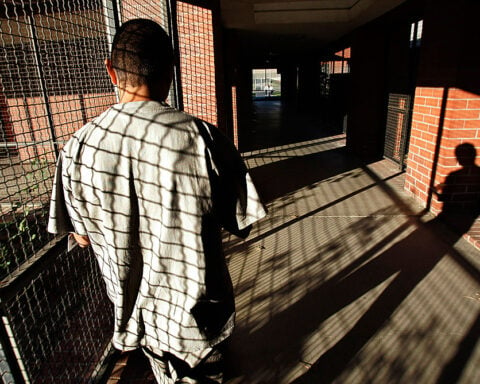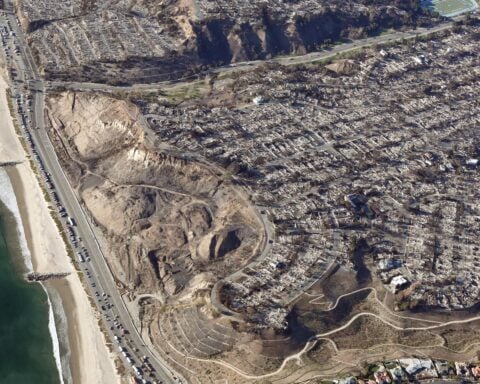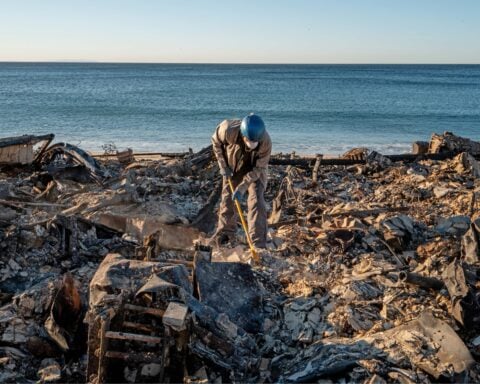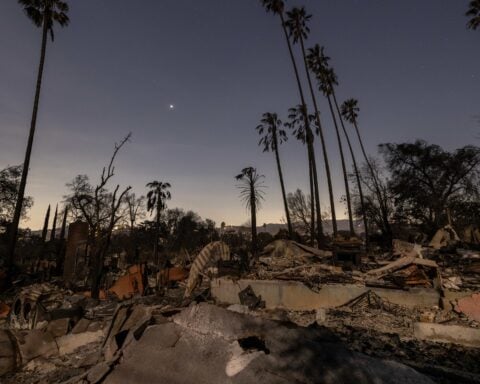By Liya Cui and Brendan O'Brien
(Reuters) -Tens of millions of Americans living in the U.S. West endured scorching temperatures on Tuesday while wind gusts and dry conditions stoked dozens of wildfires, prompting evacuations across the parched region.
Excessive heat will blanket an area stretching from the U.S. Southwest north through Nevada and into Idaho and Montana over the next two days before milder temperatures arrive on Friday, the National Weather Service said. More than 20 million people are affected by the service's advisories.
Temperatures in Phoenix and Las Vegas were expected to surpass 110 degrees Fahrenheit (43 C) by midday on Tuesday while 1,200 miles (1,900 km) to the north in Billings, Montana, a high of 107 degrees Fahrenheit was forecast by the service.
The heat, along with persistent windy and dry conditions, has amplified the threat of wildfires over the last few days.
About 20 fires were burning throughout the state, scorching more than 100,000 acres (40,470 hectares) so far, said the California Department of Forestry and Fire Protection. Three of the fires were 98% contained as of Tuesday morning.
In Riverside, California, about 55 miles (88 km) east of Los Angeles, a blaze that began on Sunday destroyed or damaged more than a dozen homes over the past two days. The Hawarden Fire, which was 20% contained as of Tuesday, was sparked by fireworks, authorities said, forcing about 100 people to evacuate, injuring two residents and burning more than 500 acres, officials said.
The California blazes were among some 69 large, active fires burning in the West, including 24 in Oregon and 9 in Arizona, according to the National Interagency Fire Center.
The center urged residents in the region to stay vigilant and prepare to evacuate at a moment's notice.
The Biden administration said on Tuesday that the U.S. National Oceanic and Atmospheric Administration (NOAA) would begin sharing satellite data with the interior and agriculture departments in an effort to rapidly detect and report wildfire starts.
"With more real-time information we can reduce the risks to crews ... and improve our response time reducing the risk to impacted communities," Secretary of Agriculture Tom Vilsack said in a statement.
Canada's Alberta Province has also been facing dozens of wildfires in recent days, causing thousands of people to evacuate, including an evacuation of Jasper National Park late on Monday night.
Smoke from the Canadian fires has begun to degrade the air quality in some areas of the western U.S.
"Wildfire smoke transported from Canada and the Northwest US has led to poor air quality conditions across much of our area," the U.S. National Weather Service in Cheyenne, Wyoming, wrote on X.
As of Tuesday afternoon, Nampa and Boise, Idaho, and Burns, Oregon, had the worst air quality in the U.S., with "very unhealthy conditions" in all three locations, according to IQAir, which tracks global air quality conditions.
(Reporting by Liya Cui in New York and Brendan O'Brien in Chicago; Editing by Sandra Maler)

 Body count from South African mine siege rises to 60
Body count from South African mine siege rises to 60
 US importers rush in goods from China as Trump tariff threat looms
US importers rush in goods from China as Trump tariff threat looms
 China's RedNote: what you need to know about the app TikTok users are flocking to
China's RedNote: what you need to know about the app TikTok users are flocking to
 Novak Djokovic breaks a tie with Roger Federer for the most Grand Slam matches in tennis history
Novak Djokovic breaks a tie with Roger Federer for the most Grand Slam matches in tennis history
 Japan finance minister flags action against excessive foreign exchange movement
Japan finance minister flags action against excessive foreign exchange movement
 British author Neil Gaiman denies ever engaging in non-consensual sex as more accusers come forward
British author Neil Gaiman denies ever engaging in non-consensual sex as more accusers come forward
